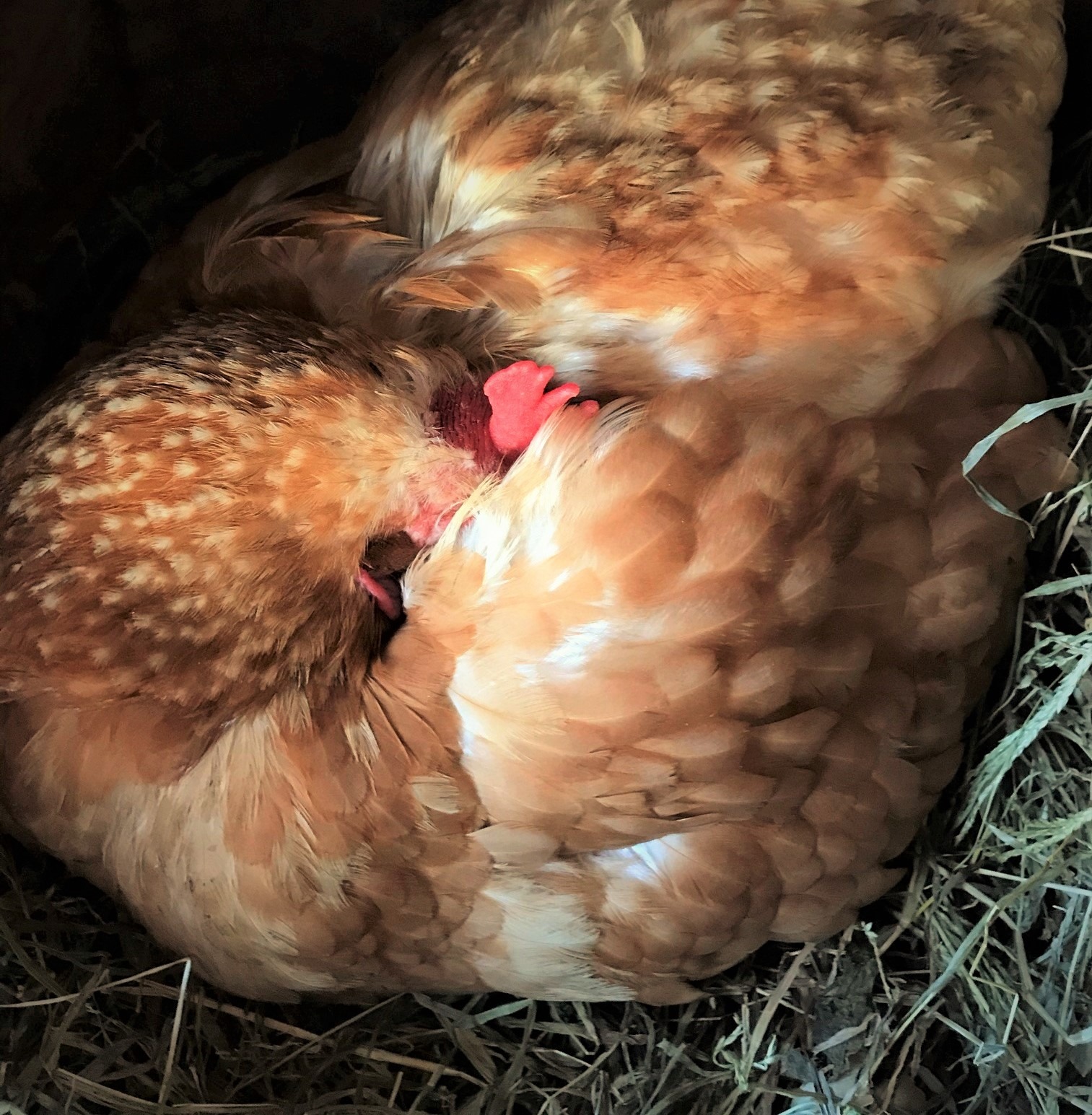About a Day
October 4, 2024
As autumn approaches, our chickens start slowing down for the winter. The pineal gland behind their eyes registers the change in daylight length, and they lay fewer and fewer eggs as their circadian rhythm attempts to prevent them from raising baby chicks in the winter. By March, when the hens’ glands register that there is once again enough daylight, they begin to lay again. Putting a light on in their coop which mimics 14-16 hours of daylight, helps fool their natural rhythm and encourages them to keep producing eggs. It certainly makes a difference in the number of eggs we get, but it’s still no substitute for sunshine.
In the past, I’ve set the timer for their light to come on from 4pm – 9pm. Having the light on in the coop that time of day has the added benefit of helping me see what it is I’m actually collecting, when I go into the coop to gather the eggs. I also like looking outside in the evening and seeing that the light is indeed still functioning, and that the hens are all happily hanging out as their 40-watt bulb sways in the breeze.
But now I realize that there was a flaw with that schedule. Chickens, who are as bad at seeing in the dark as I am, rely on the gradual twilight of a natural sunset to encourage them to seek shelter for the night. It was probably a bit confusing to them when the light I installed shut off abruptly at 9pm and the coop was plunged into complete darkness. I’ve now changed the timer, so the light comes on at 2am and shuts off at 6am, at which point the sun has already risen. Apologies to my hens of yesteryear.
The term “circadian” comes from the Latin words “circa” which means “around” or “about” and “diem” which means “a day” – together they mean “approximately a day”. Circadian rhythms, be they human or chicken, help regulate a body’s functions to coincide with different parts of the day. Changes in daylight length, intensity, and color spectrum all play a part in telling the body what to do. When the day length shortens, our sheep go into heat, and our chickens stop laying. When the sun begins to set, both our chickens and our pigs settle in for the night and sleep until morning.
When choosing the best type of bulb to use for our coop, there is apparently no difference to the hen’s egg laying when using an incandescent bulb versus a fluorescent bulb, or an LED (light emitting diode). Incandescent bulbs, though, use too much energy and are a potential fire hazard in a dusty coop. Fluorescent bulbs that flicker, can cause irritability in hens and they are more likely to start fighting with each other. (I wonder if anyone has ever studied its effect on humans – it could explain a lot.) LED bulbs are the safest and the most energy efficient for a coop. So, that’s what we are using.
There have been studies that have shown intriguing changes to the size and shape of eggs (but not the nutritional value) when the hen house is lit with different colored bulbs.
Chickens exposed to green LEDs laid eggs with stronger shells.
Chickens exposed to blue LEDs laid rounder eggs.
Chickens exposed to red LEDs laid smaller eggs but in greater quantity.
Chickens exposed to white LEDs laid the largest eggs.
White (which is all the colors on the spectrum combined) is what we put in our coop this year, because it is the most like natural sunshine - and when in doubt, I always go with whatever mimics nature best.
If turning a light on in the chicken coop can convince my hens to keep laying eggs, and the color of that light can change the type of eggs they lay – I can only imagine what being constantly bombarded with various kinds of artificial lighting is doing to my own brain. I miss seeing the light on in their coop in the evenings, and collecting eggs is certainly more challenging in the dark, but my own circadian rhythm is so far off that I often find myself awake at 2am anyway. So now when I wake up “to check on the plumbing and what not”, I can spend a few moments looking out the bedroom window, watching our girls living their life.
It’s all about a day, a day filled with light.

